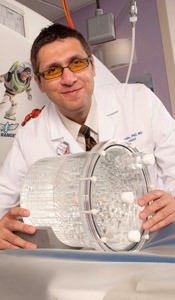Review of [18F]FDG PET-CT Protocol Trends in Response to Advancements in PET Technology in the Past 15-Years
Presentations
PO-GePV-I-74 (Sunday, 7/10/2022) [Eastern Time (GMT-4)]
ePoster Forums
Purpose: Optimization of whole-body (WB) PET imaging protocols generally entails reviewing the administered dose (A) and scan duration (t). Technology advancements e.g., longer axial field lengths, TOF acquisition, and improved reconstruction algorithms, plays a pivotal role in refining these two parameters. Our aim was to therefore investigate clinical protocol trends from the last 15 years.
Methods: An extensive PubMed search for WB adult FDG PET-CT was performed. We then selected articles reporting A, t, 3D-mode, scanner model, and study year, avoiding duplicate studies. For weight-based doses, we converted to total dose/70kg. For continuous bed motion, the speed was converted to a static time/bed (sec) quantity using a scanner-specific scaling factor. Since the total event detected per bed in PET imaging is proportional to the product of A and t, we calculated their product (ATP) for a 70 kg patient. We then performed a linear regression of A, t, and ATP on year of study for all scanner models.
Results: Of the examined 600 publications, only a set of n=50 data sets were found to encompass all the aforementioned parameters, with the study year spanning 2007-2021. During this period, the shortest and longest scan durations recorded were 88sec and 300sec, respectively (Mean/SD = 153.4/48.4), while the reported A values ranged from 154MBq to 518MBq (Mean/SD = 296.4/78.4). ATP was found to be moderately and significantly correlated with the study year (r=-0.545, P<0.00001), indicating a gradual decline of A, t, or both with time (Figure 3).
Conclusion: We have shown FDG PET protocols to have undergone significant changes in the past 15 years worldwide, however it remains uncertain if this was due to reduction of dose or scan time. Further investigation is warranted to understand how the emergence of these new technologies are being utilized for protocol optimization in clinical PET imaging.
Keywords
Taxonomy
IM- PET : Mulit-modality CT-PET
Contact Email



